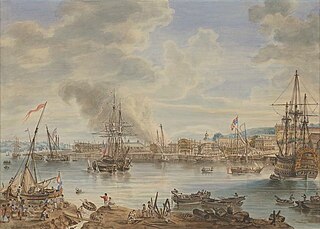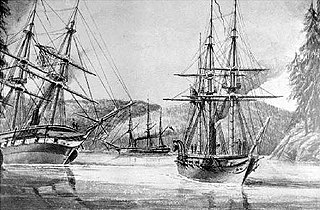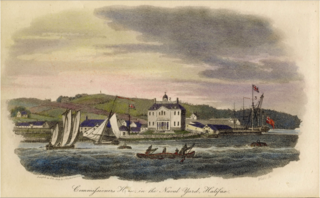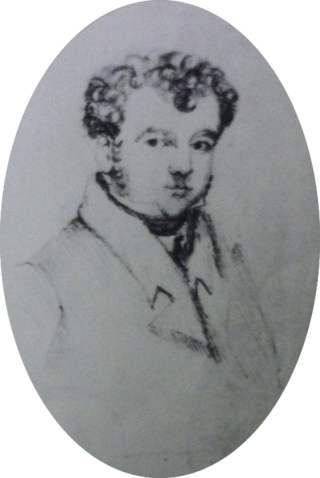
Woolwich Dockyard was an English naval dockyard along the river Thames at Woolwich - originally in north-west Kent, now in southeast London - where many ships were built from the early 16th century until the late 19th century. William Camden called it 'the Mother Dock of all England'. By virtue of the size and quantity of vessels built there, Woolwich Dockyard is described as having been 'among the most important shipyards of seventeenth-century Europe'. During the Age of Sail, the yard continued to be used for shipbuilding and repair work more or less consistently; in the 1830s a specialist factory within the dockyard oversaw the introduction of steam power for ships of the Royal Navy. At its largest extent it filled a 56-acre site north of Woolwich Church Street, between Warspite Road and New Ferry Approach; 19th-century naval vessels were fast outgrowing the yard, however, and it eventually closed in 1869. The former dockyard area is now partly residential, partly industrial, with remnants of its historic past having been restored.

Chatham Dockyard was a Royal Navy Dockyard located on the River Medway in Kent. Established in Chatham in the mid-16th century, the dockyard subsequently expanded into neighbouring Gillingham; at its most extensive two-thirds of the dockyard lay in Gillingham, one-third in Chatham.

Royal Navy Dockyards were state-owned harbour facilities where ships of the Royal Navy were built, based, repaired and refitted. Until the mid-19th century the Royal Dockyards were the largest industrial complexes in Britain.

Sir William Henry White, was a prolific British warship designer and Chief Constructor at the Admiralty.

His Majesty's Naval Base, Portsmouth is one of three operating bases in the United Kingdom for the Royal Navy. Portsmouth Naval Base is part of the city of Portsmouth; it is located on the eastern shore of Portsmouth Harbour, north of the Solent and the Isle of Wight. For centuries it was officially known as HM Dockyard, Portsmouth: as a Royal Dockyard, Portsmouth functioned primarily as a state-owned facility for building, repairing and maintaining warships; for a time it was the largest industrial site in the world.

Fredrik Henrik af Chapman was a Swedish shipbuilder, scientist and naval officer. He was vice admiral in the Swedish Navy, and manager of the Karlskrona shipyard from 1782 to 1793. Chapman is credited as the world's first person to apply scientific methods to shipbuilding and is considered to be the first naval architect.

HMS Plumper was part of the 1847 programme, she was ordered on 25 April as a steam schooner from Woolwich Dockyard with the name Pincher. However, the reference Ships of the Royal Navy, by J.J. College, (c) 2020 there is no entry that associates this name to this build. The vessel was reordered on 12 August as an 8-gun sloop as designed by John Fincham, Master Shipwright at Portsmouth. Launched in 1848, she served three commissions, firstly on the West Indies and North American Station, then on the West Africa Station and finally in the Pacific Station. It was during her last commission as a survey ship that she left her most enduring legacy; in charting the west coast of British Columbia she left her name and those of her ship's company scattered across the charts of the region. She paid off for the last time in 1861 and was finally sold for breaking up in 1865.

The Royal Naval Academy was a facility established in 1733 in Portsmouth Dockyard to train officers for the Royal Navy. The founders' intentions were to provide an alternative means to recruit officers and to provide standardised training, education and admission. In 1806 it was renamed the Royal Naval College and in 1816 became the Royal Naval College and the School for Naval Architecture. It was closed as a training establishment for officer entrants in 1837.

Royal Naval Dockyard, Halifax was a Royal Navy base in Halifax, Nova Scotia. Established in 1759, the Halifax Yard served as the headquarters for the Royal Navy's North American Station for sixty years, starting with the Seven Years' War. The Royal Navy continued to operate the station until it was closed in 1905. The station was sold to Canada in 1907 becoming His Majesty's Canadian Dockyard, a function it still serves today as part of CFB Halifax.

The Surveyor of the Navy also known as Department of the Surveyor of the Navy and originally known as Surveyor and Rigger of the Navy was a former principal commissioner and member of both the Navy Board from the inauguration of that body in 1546 until its abolition in 1832 and then a member Board of Admiralty from 1848 to 1859. In 1860 the office was renamed Controller of The Navy until 1869 when the office was merged with that of the Third Naval Lord's the post holder held overall responsibility for the design of British warships.
James Inman (1776–1859), an English mathematician and astronomer, was professor of mathematics at the Royal Naval College, Portsmouth, and author of Inman's Nautical Tables.

Sir Anthony Deane, FRS was an English shipwright and politician who sat in the English House of Commons and served as mayor of Harwich.

Sir William Symonds CB FRS was Surveyor of the Navy in the Royal Navy from 9 June 1832 to October 1847, and took part in the naval reforms instituted by the Whig First Lord of the Admiralty Sir James Robert George Graham in 1832.

The Royal Corps of Naval Constructors (RCNC) is an institution of the British Royal Navy and Admiralty for training in naval architecture, marine, electrical and weapon engineering. It was established by Order in Council in August 1883, on the recommendation of the naval architect Sir William White. Its precursor was the Royal School of Naval Architecture, London.
The first School of Naval Architecture opened in 1811 in Portsmouth. The school was principally established to offer a deeper study of the principles of ship design than had traditionally been retained through the apprenticeship model. To this end, students were taught mathematics, science, drawing, history, geography and literature. In 1816, it joined the Royal Naval College at Portsmouth to become the Royal Naval College and the School for Naval Architecture. Political lobbying forced its closure in 1837. Divisions within the Navy had long been felt between those who saw educational pathways as key to progression within the Royal Navy and those who regarded family connections and patronage as the best means of advancement. Of the first School's closure, Reverend Joseph Woolley observed "that establishment produced men of accomplished skill and power in the application of sound theoretical principals to their professional work; but because they were treated with suspicion and dislike by the uneducated members of the profession, who unfortunately had too much influence at head quarters: the old cry of want of experience was raised against them, and the value of their services, were for many years--the best years of their lives--lost to the country."
The Reverend Joseph Woolley MA LLD FRAS (1817-1889) was a fellow of the Royal Astronomical Society and a founding member of the Royal Institution of Naval Architects.

Deptford Dockyard was an important naval dockyard and base at Deptford on the River Thames, operated by the Royal Navy from the sixteenth to the nineteenth centuries. It built and maintained warships for 350 years, and many significant events and ships have been associated with it.
Prof Francis Elgar FRS FRSE LLD, naval architect, born at Portsmouth on 24 April 1845, was eldest son of nine children of Francis Ancell Elgar, who was employed at Portsmouth dockyard, by his wife Susanna Chalkley.

HMS Leander was a 50-gun frigate of the Royal Navy which saw service in the Crimean War.

Jeremiah Owen was a mathematician, naval architect and Chief Metallurgist to the Admiralty during the first half of the nineteenth century. Owen took part in the debates over the professionalization of naval architecture in the Royal Navy and was active in campaigns for Polish human rights in the 1830s. He his chiefly known for his scientific work on metals in the design of naval vessels.













